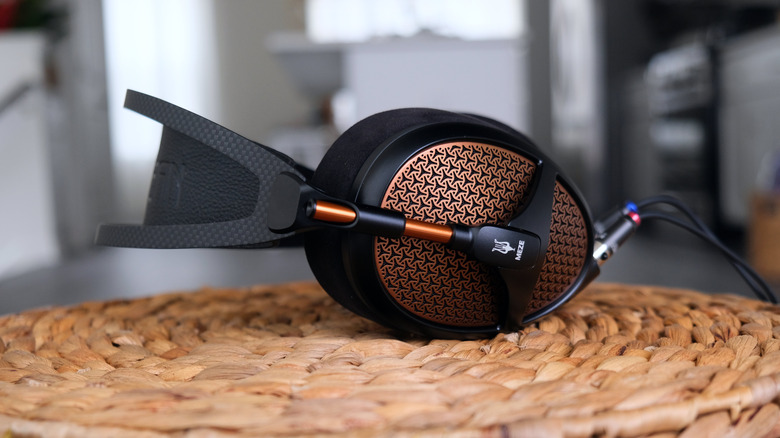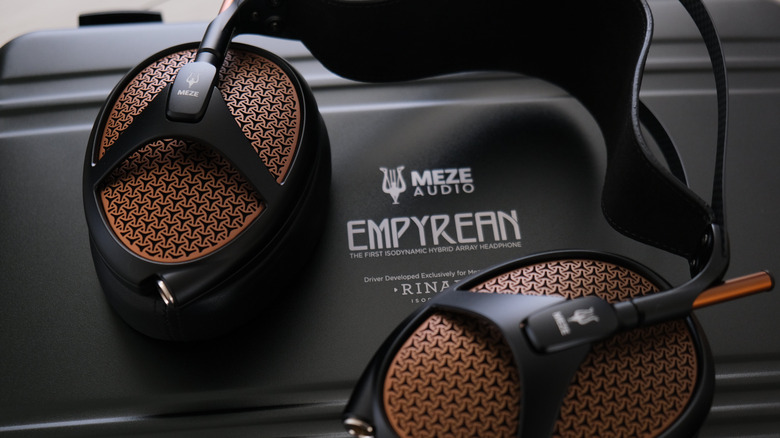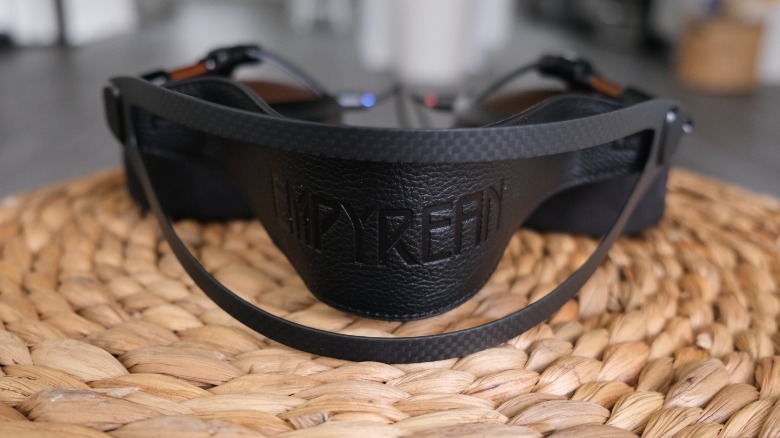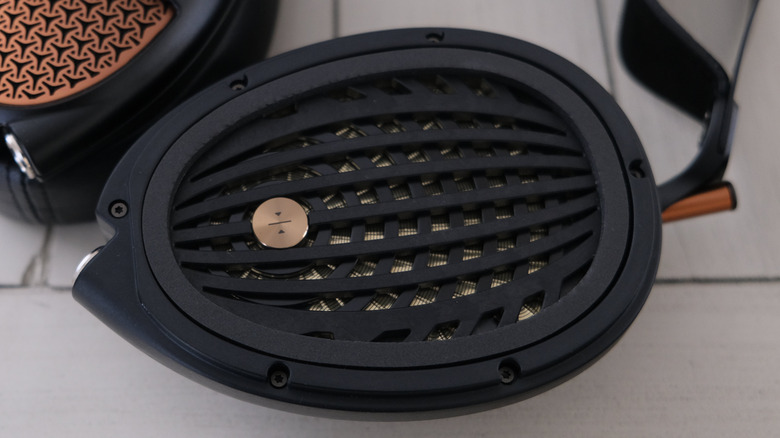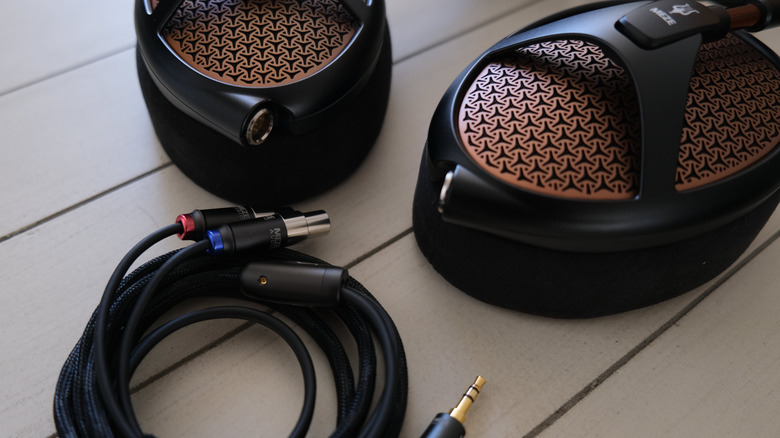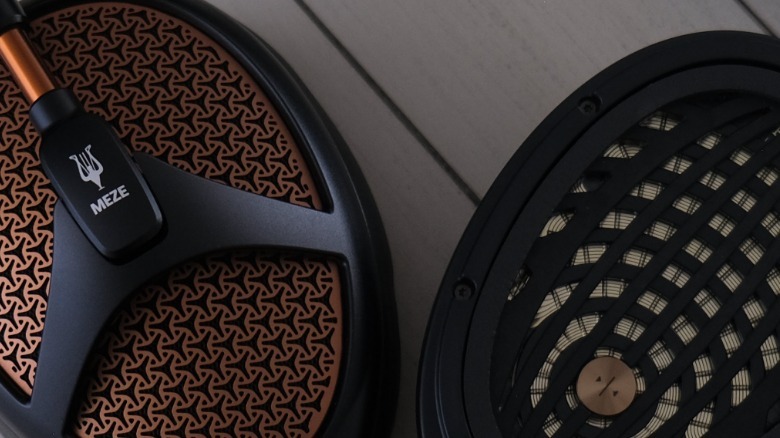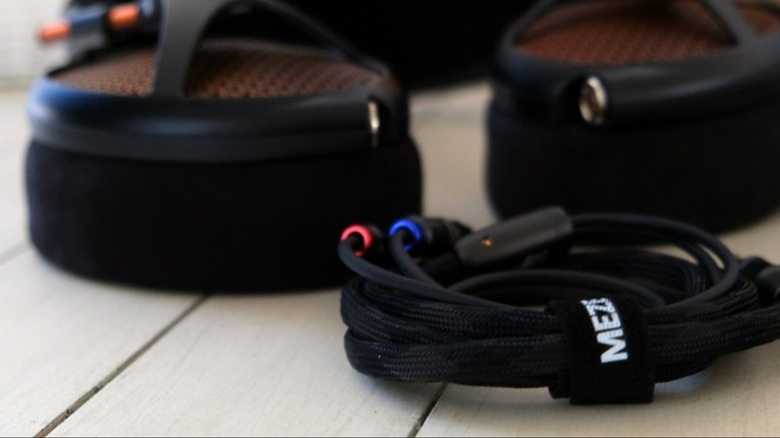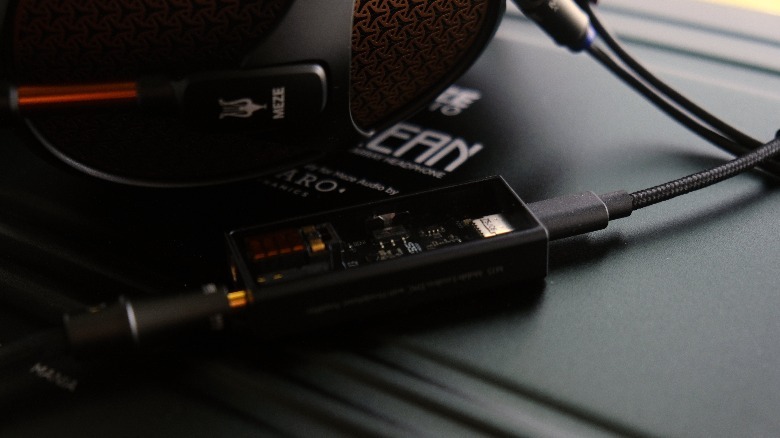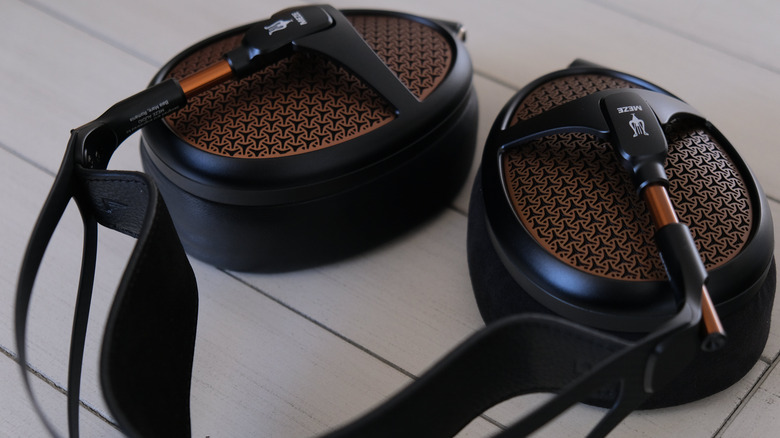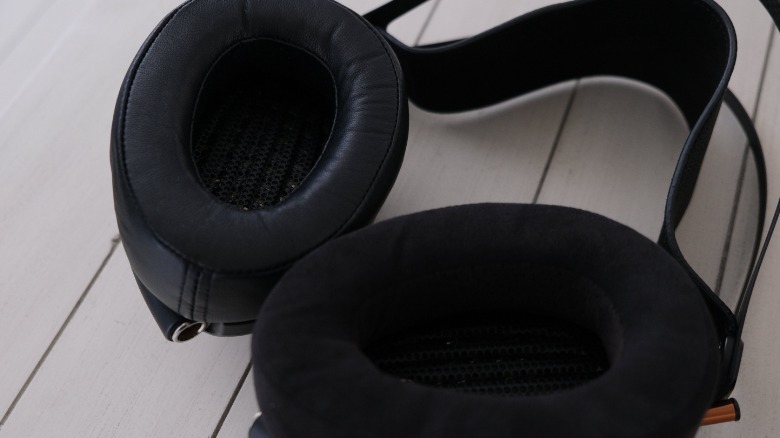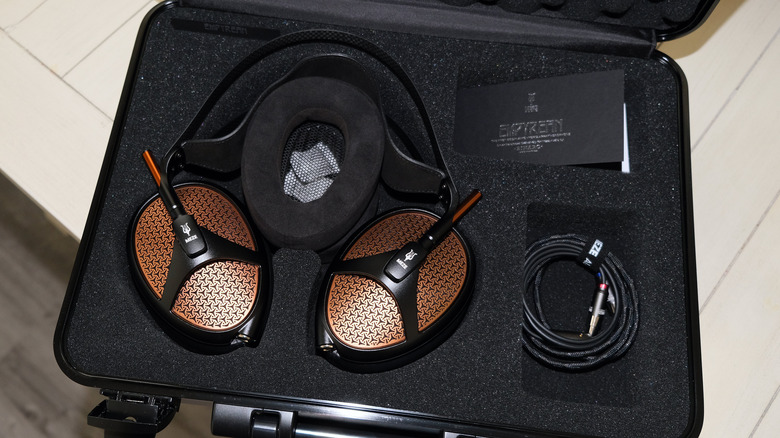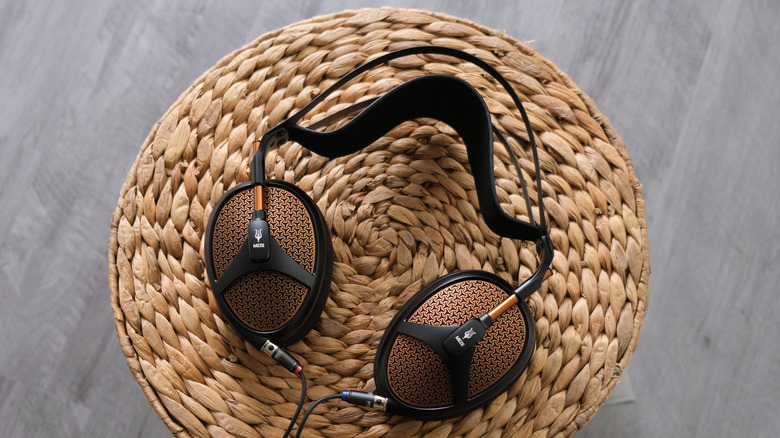Meze Empyrean Review: Planar Magnetic Headphones Vie For The Crown
- Look gorgeous
- Comfortable to wear for long periods
- Magnetic ear pads feel like magic
- Warm, rounded sound signature
- Sizeable price tag
- Additional cables are spendy
Before Meze Audio released the $2,999 Empyrean, the company had created mid-fi headphones for the audiophile market using dynamic drivers. It had garnered a good name with stylish, wood-clad over-ear headphones like the Meze 99 Classics. I've got a pair of the next over-ears released by the company, the Meze 99 Neo, and I love looking at them from every angle — and the situation with the Empyrean is no different. The company puts a significant amount of care into the external physical aesthetic of their hardware, even for headphones you won't be able to see while they're on your ears.
Despite the fine appearance of this set of high-end headphones, and the suggestions from the company that this is, indeed, a headset worth its full asking price, it's difficult to wrap one's head around that cost. So that we might explore the value of this piece of high-end electronics, Meze Audio sent a sample unit of the Empyrean for this review.
Hardware Design
Meze uses a complicated, time-intensive CNC process to produce the Empyrean's chassis. It takes roughly 20 hours of CNC to produce the earcups, yokes, and other aluminum parts. Then the headphone is hand-assembled. Here Meze does something different; every part is designed to be repairable and replaceable, easily and quickly.
The headphone band uses leather and carbon fiber to distribute the 430g weight without any pressure points evenly. The result is a headphone that feels much lighter than it is and is almost effortless to wear all day. That could also be a minor drawback, as the light clamping force means there isn't much to keep the Empyrean from moving around while moving your head.
The CNC-perforated earcups provide sculptured elegance while also allowing the open-backed nature of the headphones to shine through. The headband yoke adjustments are from gently twisting the earcup up or down, with no ratcheting mechanism or other jarring feels to the movement.
The leather or Alcantara earcups are magnetically attached to the headphones and are easily swappable or removable by the user. They use the magnets that supply the magnetic field for the planar drivers to attach, which is a neat double-use of the technology inside the headphones. The ferromagnetic plates on the earcups also channel the magnetic field back into the headphones, improving their efficiency. The end effect is a stunning-looking pair of headphones that are comfortable to wear for long stretches of time.
Technology
The isodynamic hybrid array planar drivers inside the Empyrean come from another Romanian company, Rinaro. It's been honing its knowledge of planar magnetic drivers since the 1980s, with this driver carrying three decades of craftsmanship, engineering, and audio science.
Rinaro was founded in the former USSR as a state-funded initiative for innovation in acoustic technology. Meze partnered to create the Isodynamic Hybrid Array driver used in the Empyrean. Planar drivers use magnets and a very thin diaphragm with a circuit trace. When current passes through the circuit, it interacts with the magnetic field and pushes air to create sound. On most planar drivers, the circuit trace is a switchback design to move the driver more uniformly.
The hybrid driver that Meze and Rinaro designed uses two different circuit paths. A spiral-shaped voice coil is placed on the bottom end of the diaphragm, where the user's ear canal would be. A switchback voice coil takes up the driver's top surface to target the ear's outer surface. Specially designed magnets mirror the voice coil paths on both sides of the driver, creating an efficient isodynamic magnetic field.
The spiral coil is better at reproducing mid-high frequencies, and the switchback is better at reproducing lower frequencies. Meze says this shifting of the higher frequency response lower on the ear reduces reflected signals entering the ear canal, which improves 3D sound imaging.
Audio specifications
The planar magnetic drivers used by Meze in the Empyrean have an impressive frequency response that starts at 4 Hz for some sub-bass that you can feel and goes up to 110 KHz. That's beyond the reaches of human hearing, which commonly is stated from 20 Hz to 20 KHz. That's beyond the reaches of human hearing, which commonly is stated from 20 Hz to 20 KHz.
Making a driver that can respond outside the reach of human hearing isn't simply a numbers game to make it look better on paper. When a driver can respond that far outside the hearing range, it's usually so that the frequencies we can hear are reproduced accurately.
They have an impedance of 31.6 ohms, which makes them easy to drive from almost any source, from smartphone dongles to desktop amps. According to the company, they also have less than 0.1% total harmonic distortion and a nominal sound pressure of 100 dB per mW at 1 kHz.
Meze gives you a choice of three cables at the time of purchase, a 2.5m OFC cable with a 6.35mm jack, a 1.2m OFC cable with a 3.5mm jack, and a 2.5m OFC cable with a 4-pin XLR connector. Pick the one that your source uses. Meze does sell all the cables as accessories for $149 each. Upgraded cables in braided copper (from $249) or silver-plated copper (from $399) are also available, with an additional 4.4mm balanced jack option.
What you'll need to listen along
With Meze shipping the Empyrean with your choice of cable, the first decision is where you'll primarily listen to it. The low 31.6-ohm impedance means the Empyrean can be driven by almost any source. Still, as with all audiophile headphones, they have a habit of showing any inconsistencies or distortion from the source. Garbage in, garbage out, as they say.
With my usual stack of Schiit's Modius feeding the Magnius, the Empyrean sang, even on the lower-powered single-ended output, which puts a max of 2W per channel at 32 ohms. That's plenty of power for the relatively easy-to-drive isodynamic drivers, putting enough slam in the low frequencies, which never managed to overpower the lower mids. Meze doesn't put minimum power requirements out, but you'll want a source capable of at least 100mW, preferably 500mW, or a full watt to get the best out of the Empyrean.
To test more mobile playback options, I switched to the $250 Questyle M15 (shown above). This mobile dongle uses ESS' 9281AC premium chipset and two of its patented Current Mode Amplification (CMA) technology, offering low distortion across the entire amplification range. The M15 has turned into my favorite source for the Empyrean, with a synergy offering plenty of slam in the low frequencies, while the midrange is more present thanks to the CMA modules in place of the usual OP-amps that other mobile dongles use.
What you'll hear
I tested the Meze Empyrean on my usual mid-range DAC and headphone amp stack of the Schiit Modius DAC and Magnius amp and the portable Questyle M15 dongle. Both sources performed well, but I preferred the clarity and slightly elevated mids of the M15 the more I listened to it.
The Empyrean has a warm and smooth sound signature. That means it has slightly emphasized lows and mids without overpowering the high frequencies. It's not as pronounced as you might think, but it moves the sound away from a neutral reference tuning.
The bass response is punchy with a nice level of slam. The Alcantara earcups gave slightly better bass overall, but the leather earcups had a little better resolution in the mids. The Alcantara is also more comfortable to wear over time, but that is a personal preference.
The biggest things I noticed as I listened were that the Empyrean has a way of bringing out the best qualities of any vocal track, with a level of intimacy and emotion that I've often heard outside of a live event. It does this without overwhelming any other part of the mix.
High frequencies are often too crisp on planars, especially the higher-end better-resolving pairs. The Empyrean doesn't suffer from this, with a precise treble that never crosses the line into harshness or sibilance.
As for the soundstage, that is wide but not as wide as the reference-tuned Audeze LCD-5. Even with that wideness, it still feels intimate, like seeing your favorite bands at a small, hole-in-the-wall venue instead of inside a stadium.
Alternative options
Like the $4,500 Audeze LCD-5 I recently reviewed, the Empyrean is for uncompromising audiophiles where money is no object in pursuing sonic perfection. While Audeze went for a more reference tune for its flagship planars, Meze took a different tack with the Empyrean's warm and smooth tune.
Another more analytical tuned pair of planars is Dan Clark Audio's $4,000 EXPANSE. The company used a custom Acoustic Metamaterial Tuning System to remove standing waves in higher frequencies. That reduces listening fatigue, which is perhaps more important on expensive audiophile headphones to increase the ROI.
If dynamic drivers are what you prefer, the similarly priced $2,990 Focal Stellia is worth checking out. As befitting a flagship pair of headphones, the Stellia has a "purity and transparency" to its tuning, "pulling out detail that other headphones might miss." That's pretty true of any headphones as you approach the upper echelons. After a while, the rule of diminishing returns hits hard, but you get fewer flaws and fewer distractions from the music you want to listen to.
To get most of the performance without the corresponding hit to your bank account, we recommend Hifiman's $699 ANANDA. Like the Empyrean, they have a fun, warm tone with a few rough edges. They have a frequency range of 8Hz to 55KHz and a sensitivity of 103dB. They also come in a version with Bluetooth and an internal DAC and amplifier for another $100, bringing aptX HD, HWA, and LDAC Bluetooth codecs with up to 24-bit, 96KHz quality.
Conclusion
The Meze Empyrean sounds every bit as good as it looks, with a warm, inviting, and fun sound that will appeal to most musical tastes. The only problem is that the $2,999 price tag (in the Meze Audio store online) puts them out of reach of all but the most hardcore and affluent audio devotees.
The Isodynamic Hybrid Array planar driver Rinaro created is a technical masterpiece, without any distortion I could discern at any volume level. That driver also enables Meze to make the Empyrean light and comfortable, which most planar magnetic headphones struggle with. It's easy to drive and fun to listen to with everything I threw at it.
The Empyrean suits various genres, from nu-metal to drum n bass, to jazz and classical. In some ways, they feel more like dynamic drivers than what I expect planars to sound like, with a wide but intimate soundstage that truly gets in your face.
It's different and just as worthy of its place in anyone's audio collection as the more neutral-tuned audiophile headphones. Some quirk of the isodynamic drivers enhances every piece of music it plays without clouding the artist's intentions. It'll be up to the listener to decide which approach they want to roll with the most.
